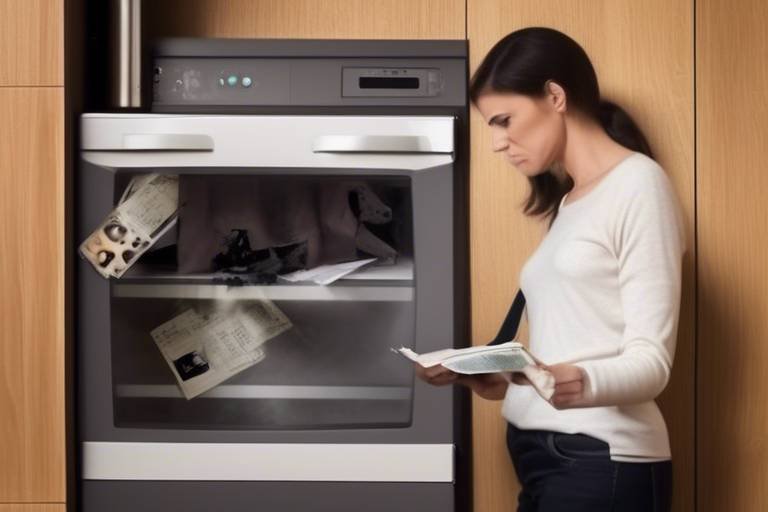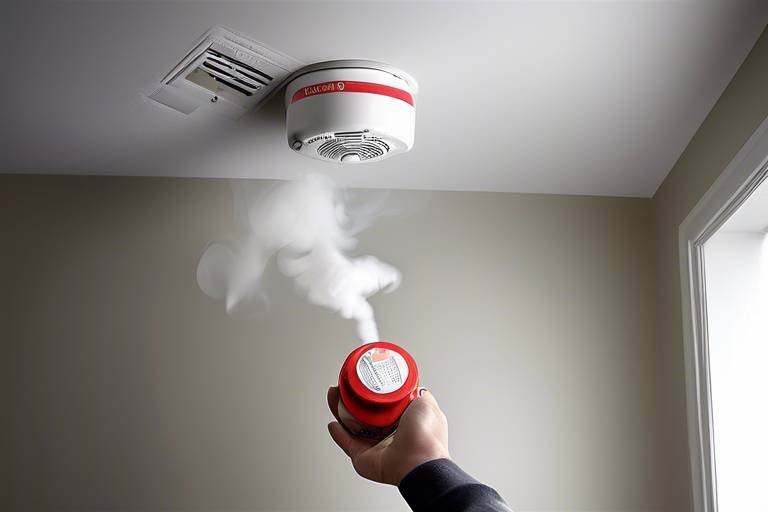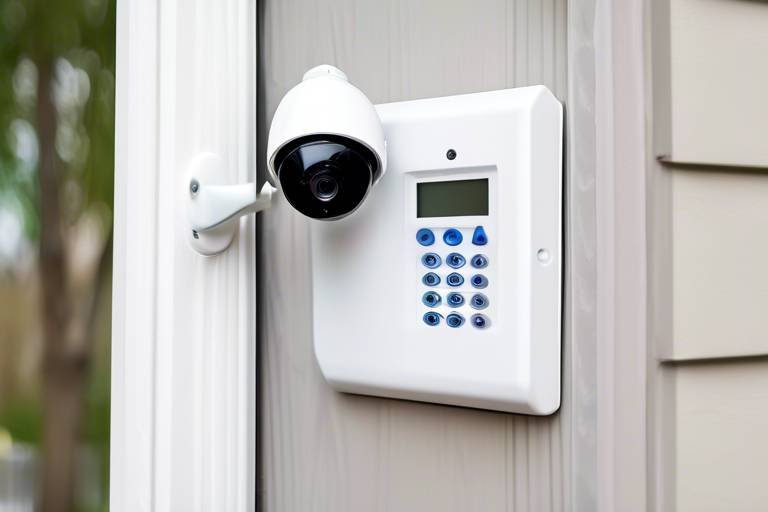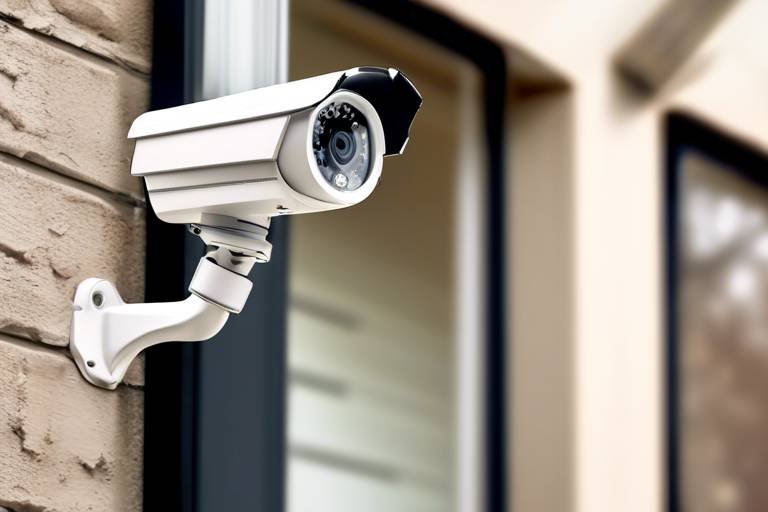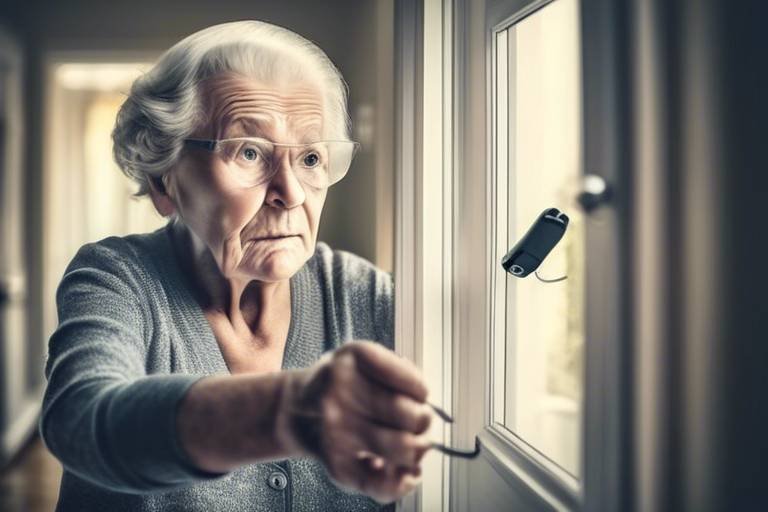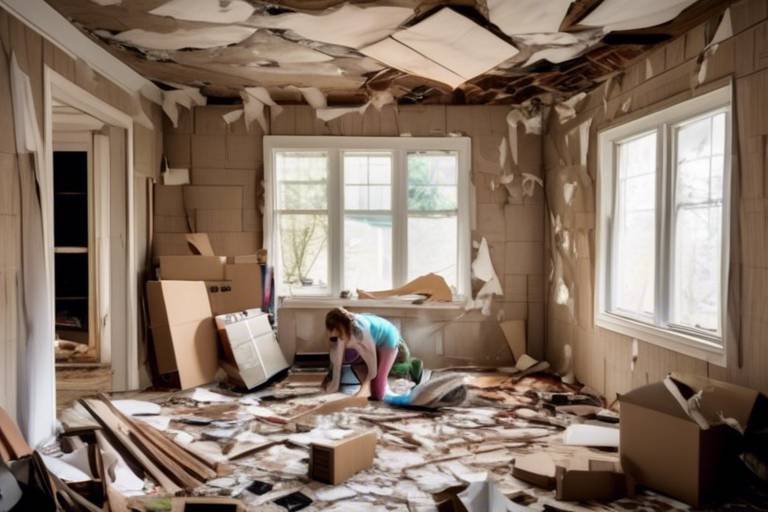Safety Checks for Buying a Second-Hand Home
Purchasing a second-hand home can be an exciting yet daunting experience. After all, you're not just buying a property; you're investing in a place that will house your dreams, memories, and perhaps even your family. However, diving into the world of second-hand homes without proper safety checks could lead to unexpected surprises— and not the good kind! Just like you wouldn’t buy a used car without checking under the hood, you shouldn't buy a second-hand home without a thorough examination. This article will guide you through essential safety checks that will empower you to make informed decisions, ensuring that your new abode is not only charming but also safe and sound.
A comprehensive home inspection is your first line of defense against potential issues lurking within the walls of a second-hand home. Think of it as a health check-up for your future residence. During this inspection, a qualified inspector will examine various aspects of the home, from the roof down to the foundation, looking for any red flags that could indicate deeper problems. Expect to receive a detailed report outlining the condition of major systems such as plumbing, electrical, and structural components. This crucial step can save you from making a regrettable investment by uncovering hidden defects that could cost you thousands down the line.
Evaluating the structural integrity of a second-hand home is not just important; it’s essential. You wouldn’t want to buy a beautiful cake only to find it’s built on a shaky base, right? When assessing a home, focus on key areas such as the foundation, walls, and roof. These components are the backbone of any structure, and their condition will significantly affect your safety and comfort. Here are some critical areas to scrutinize:
- Foundation: Look for signs of settling or cracks.
- Walls: Check for bulging or bowing, which can indicate serious issues.
- Roof: Assess age and condition to prevent leaks and water damage.
Foundation problems can lead to significant repair costs, making it a priority in your safety checks. As you walk through the home, keep an eye out for signs of foundation issues, such as uneven floors or doors that don't close properly. These could be early indicators of more serious problems. If you notice any of these signs, it's crucial to address them during your home buying process. Ignoring foundation issues could mean you’re signing up for a financial burden that could take years to rectify.
Identifying cracks in walls or floors can be a telltale sign of settling problems. Small hairline cracks might not be alarming, but larger cracks—especially those that are wider than a quarter inch—should raise a red flag. Think of cracks as the home’s way of whispering its secrets to you. If you find cracks, consider consulting a structural engineer to assess the severity and potential implications for your home safety.
Water damage can compromise a home's structure, leading to mold growth and costly repairs. Look for water stains on ceilings and walls, as well as signs of dampness in basements or crawl spaces. If you spot any of these indicators, don’t just brush them off; investigate further. Water damage can weaken the integrity of your home, and addressing it early can save you from major headaches down the road.
The condition of the roof is essential for overall home safety. A roof is your first line of defense against the elements, and its age and materials can significantly impact its longevity. When assessing the roof, look for missing shingles, sagging areas, or signs of leakage. A roof in poor condition can lead to a host of problems, from water damage to increased energy costs. Don’t hesitate to ask the seller about the roof’s age and any past repairs, as this information can help you gauge how much life is left in your investment.
An outdated electrical system can pose serious risks, making it crucial to assess the electrical setup in a second-hand home. Faulty wiring can lead to fires, so it’s essential to check for any outdated components. During your walkthrough, pay special attention to the wiring and outlets. Are they frayed? Do they look like they’ve seen better days? If so, you might need to budget for an electrical upgrade, which can be costly but necessary for your safety.
Inspecting wiring and outlets is crucial for preventing electrical hazards. Look for any exposed wires or signs of overheating, such as scorch marks around outlets. If you notice any of these issues, it’s wise to call in a professional electrician to evaluate the situation. Remember, safety first!
The breaker box is the heart of a home's electrical system. Evaluate its condition and capacity to handle modern electrical demands. If the box looks old and outdated, it might not be equipped to support your lifestyle. Upgrading the breaker box can ensure your home is safe and efficient, avoiding potential electrical fires or outages.
Ensuring safe plumbing and water quality is vital for health and safety. A home with plumbing issues can lead to water leaks, mold growth, and even structural damage. As you explore the property, check for signs of leaks under sinks and around toilets. Additionally, consider the type of pipes used in the home. Older homes may have lead pipes, which pose serious health risks. Knowing what you're dealing with can help you make informed decisions.
The type of pipes used in a home can affect safety and longevity. For instance, galvanized pipes can rust over time, leading to water quality issues. If you discover polybutylene pipes, be cautious; they are known for failing and can lead to costly repairs. Understanding the materials used in the plumbing system can save you from unpleasant surprises.
Testing water quality is essential for ensuring safe consumption. You can hire a professional to conduct comprehensive water testing or use a home testing kit for a quick assessment. Look for contaminants like lead, bacteria, or high levels of chlorine. Knowing the quality of your water can help you avoid health issues and ensure your family’s safety.
Q: How much does a home inspection typically cost?
A: The cost can vary widely based on location and the size of the home, but you can expect to pay between $300 and $500 for a thorough inspection.
Q: Should I attend the home inspection?
A: Yes! Attending the inspection allows you to ask questions and gain firsthand knowledge about the home’s condition.
Q: What if the inspection reveals issues?
A: You can negotiate repairs with the seller, ask for a price reduction, or even walk away from the deal if the problems are too severe.

Understanding Home Inspection
This article discusses essential safety checks to consider when purchasing a second-hand home, ensuring that buyers make informed decisions and avoid potential pitfalls associated with older properties.
When it comes to buying a second-hand home, understanding the importance of a thorough home inspection cannot be overstated. Think of a home inspection as your safety net; it’s the best way to catch potential issues before they turn into costly repairs. During an inspection, a professional will evaluate various aspects of the property, from the foundation to the roof, ensuring you know what you're getting into. Imagine trying to buy a used car without checking under the hood—sounds risky, right? The same principle applies to homes.
So, what can you expect during a home inspection? Typically, a qualified inspector will examine:
- Structural components: This includes the foundation, walls, and roof.
- Systems: This covers plumbing, electrical systems, and HVAC.
- Interior features: Such as windows, doors, and appliances.
Each of these areas plays a crucial role in the overall safety and functionality of the home. For instance, a small crack in a wall might seem insignificant, but it could be a sign of a much bigger issue, like a failing foundation. Therefore, knowing what to look for during an inspection can save you from future headaches and financial burdens.
Moreover, a home inspection provides you with a comprehensive report detailing the condition of the property. This report can be a powerful negotiating tool, allowing you to request repairs or even lower the purchase price based on what the inspector finds. In essence, a home inspection is not just a formality; it’s an investment in your peace of mind.
In addition, it’s a good idea to accompany the inspector during the assessment. This way, you can ask questions and gain insights firsthand. Think of it as a guided tour of your potential new home, where you can learn about its quirks and features directly from an expert. By the end of the inspection, you should have a clear understanding of the home’s condition, which can significantly influence your buying decision.
In conclusion, a home inspection is an essential step in the home-buying process. It not only helps identify potential issues but also empowers you to make informed choices. After all, buying a home is one of the most significant investments you'll ever make, and ensuring it's a safe and sound one should be your top priority.
Evaluating the structural integrity of a second-hand home is crucial. This subheading will highlight key areas to assess, including foundations, walls, and roofs, to ensure safety.
Foundation problems can lead to significant repair costs. Here, we will discuss signs of foundation issues and how to address them during your home buying process.
Identifying cracks in walls or floors can indicate settling problems. This section will explain how to interpret these signs and their implications for home safety.
Water damage can compromise a home's structure. We will explore how to spot signs of water damage and the potential long-term effects on the property.
The condition of the roof is essential for overall home safety. This part will guide buyers on assessing the roof's age, materials, and any signs of wear.
An outdated electrical system can pose serious risks. This subheading will outline what to look for in a second-hand home's electrical setup to ensure safety and compliance.
Inspecting wiring and outlets is crucial for preventing electrical hazards. This section will provide tips on identifying outdated or unsafe electrical components.
The breaker box is the heart of a home's electrical system. Here, we will discuss how to evaluate its condition and capacity to handle modern electrical demands.
Ensuring safe plumbing and water quality is vital for health and safety. This subheading will cover common plumbing issues and how to assess water quality before purchasing.
The type of pipes used in a home can affect safety and longevity. This section will explain the risks associated with various pipe materials and what to look for.
Testing water quality is essential for ensuring safe consumption. This part will outline methods for testing water and identifying potential contaminants in a second-hand home.
In this section, we will address some common questions buyers have about home inspections and safety checks when purchasing a second-hand home.
- What is the average cost of a home inspection? The cost can vary widely, but it typically ranges from $300 to $500, depending on the size and location of the property.
- How long does a home inspection take? Most inspections last between 2 to 4 hours, depending on the size and condition of the home.
- Can I skip the inspection if the house looks good? It's not advisable. Even if a home appears well-maintained, hidden issues can exist that only a professional can identify.
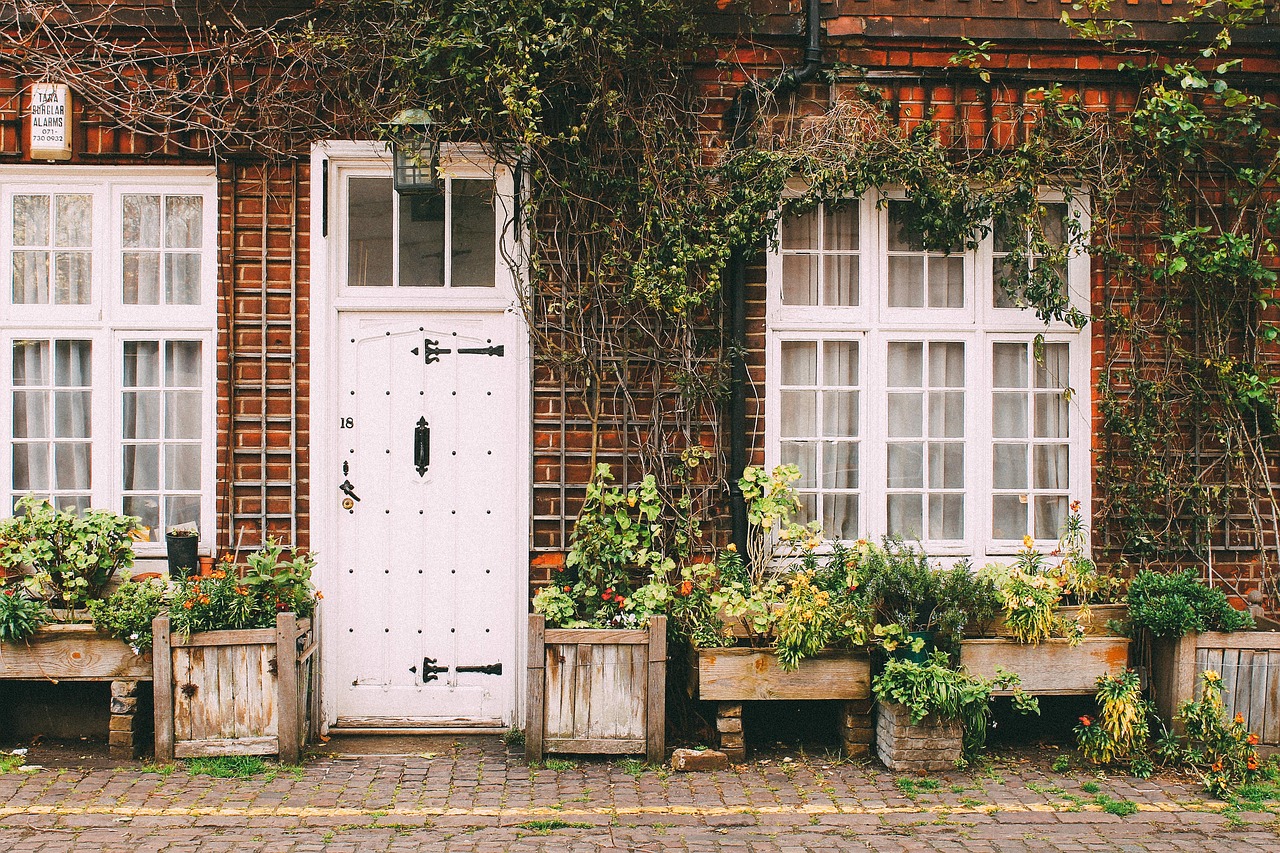
Checking Structural Integrity
When you're diving into the world of second-hand homes, one of the most critical aspects to consider is the structural integrity of the property. Think of it as the backbone of the house; if the backbone is weak, everything else is at risk. A home might look charming on the outside, but hidden issues could be lurking beneath the surface, waiting to surprise you like a plot twist in your favorite novel. So, what should you be looking for? Let’s break it down into key areas that need your attention.
First off, the foundation is where it all begins. A solid foundation is essential for the stability of the entire structure. If you notice any signs of distress, such as uneven floors or doors that stick, it might be a red flag. When inspecting the foundation, keep an eye out for cracks, which can vary in size and severity. Small hairline cracks might just be cosmetic, but larger cracks could indicate serious settling issues that require professional evaluation.
Foundation problems can lead to significant repair costs, so it’s crucial to identify them early. Here are some common signs you might encounter:
- Cracks: Look for vertical or horizontal cracks in walls and the foundation itself.
- Uneven Floors: If you can roll a marble across the floor and it takes off like a racecar, you might have a problem.
- Water Pooling: Water pooling around the foundation can lead to erosion and further issues.
Next, let’s talk about water damage. Water can be a sneaky villain in the story of a home’s structural integrity. It can compromise not just the foundation but also the walls and even the roof. When inspecting a property, check for signs of water damage, such as discoloration on walls or ceilings, mold growth, or musty odors. These indicators can point to leaks or past flooding, which could lead to costly repairs down the line.
Now, let’s dive deeper into the cracks. Not all cracks are created equal. Some may be harmless, while others can be a sign of serious problems. For instance, a few small, vertical cracks might simply be a result of normal settling, but wide, horizontal cracks could indicate that the foundation is shifting. It’s like deciphering a code; understanding the language of cracks can save you from a financial headache later on.
Water damage is another beast altogether. If you notice any signs of moisture, such as peeling paint or warped wood, it’s crucial to investigate further. Water can seep into walls and floors, causing structural damage that might not be immediately visible. Consider hiring a professional inspector who can use specialized tools to detect moisture behind walls. Remember, ignoring these signs can lead to mold growth and structural decay, making your dream home a nightmare.
Lastly, don’t forget to check the roof. A roof in disrepair can lead to leaks, which can then cause water damage throughout the house. Look for missing shingles, sagging areas, or any signs of wear and tear. If the roof is nearing the end of its lifespan, you might want to factor in the cost of a replacement into your budget. After all, a house is only as good as its roof, and you don’t want to be left out in the rain!
In summary, checking the structural integrity of a second-hand home is not just a box to tick off your list; it’s a crucial step in ensuring your investment is sound. By paying attention to the foundation, looking out for cracks and water damage, and assessing the roof's condition, you can avoid potential pitfalls that could turn your dream home into a costly burden. So, roll up your sleeves, grab your flashlight, and get ready to uncover the hidden truths of your potential new home!
Q: How can I tell if a foundation crack is serious?
A: If the crack is wider than a quarter-inch or if it’s accompanied by other signs like uneven floors or doors that won’t close, it’s best to consult a professional.
Q: What should I do if I find water damage?
A: Document the damage with photos and consider hiring a home inspector to assess the extent of the issue. You may need to consult a contractor for repairs.
Q: How often should I inspect the roof?
A: It’s a good idea to inspect your roof at least once a year, especially after severe weather. Look for signs of wear and damage regularly.
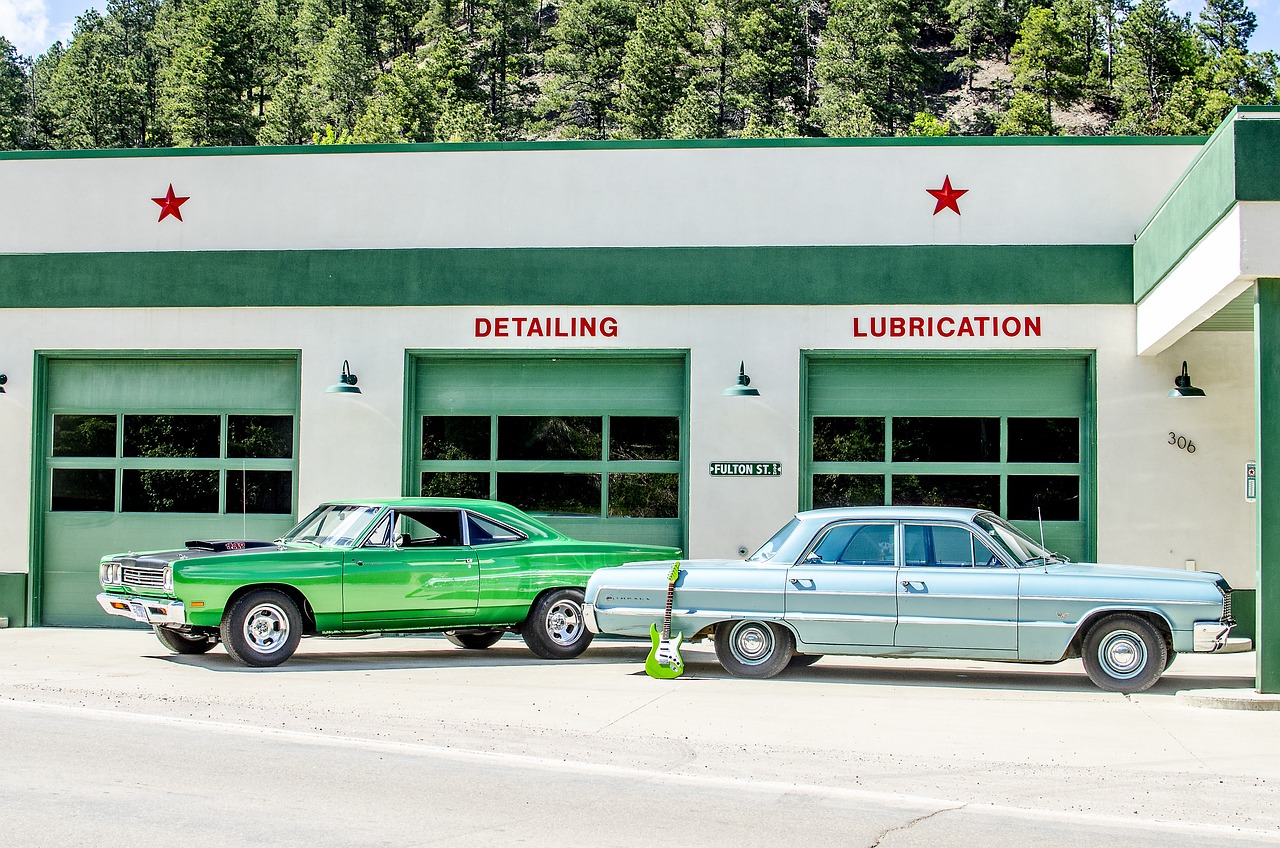
Foundation Issues
When it comes to buying a second-hand home, are among the most critical concerns that can affect the safety and value of your investment. A strong foundation is like the bedrock of a relationship; if it’s shaky, everything built on top of it can come crumbling down. So, how do you spot potential foundation problems before they become your worst nightmare? Here are some key indicators to watch for:
First off, look for visible cracks in the walls and floors. These cracks can manifest in various forms, such as horizontal, vertical, or even stair-step shapes. While some minor cracks can be normal in older homes, large or widening cracks can signal serious foundation issues. It’s essential to differentiate between cosmetic cracks and those that might compromise the structural integrity of the home.
Another red flag is settling problems. If you notice doors and windows that stick or won’t close properly, or if you see gaps between the walls and the ceiling, these could be signs of settling. It’s like when your favorite chair starts to wobble; at first, it seems harmless, but over time, it can lead to a complete collapse. Pay close attention to these details during your walkthrough.
Additionally, if you see water pooling around the foundation or evidence of moisture in the basement, this could indicate drainage issues that can lead to foundation damage over time. Water is a foundation's worst enemy, and if it’s not properly diverted away from the home, it can cause the soil to erode, leading to uneven settling and other complications.
To further understand the potential risks associated with foundation issues, consider the following table that outlines common signs of foundation problems and their implications:
| Signs of Foundation Issues | Potential Implications |
|---|---|
| Visible cracks in walls or floors | Structural instability, costly repairs |
| Doors and windows that stick | Misalignment and further damage |
| Water pooling around the foundation | Soil erosion, moisture damage |
| Uneven or sloping floors | Potential for severe foundation failure |
So, what should you do if you suspect foundation issues? First, it’s wise to consult with a professional home inspector who specializes in foundation assessments. They can provide a comprehensive evaluation and help you understand the severity of any issues. Remember, addressing foundation problems early can save you a fortune in repairs down the line.
In conclusion, being vigilant about foundation issues is crucial when purchasing a second-hand home. Just like you wouldn’t buy a car with a questionable engine, you shouldn’t overlook the foundation of a house. Make sure to do your due diligence and, if necessary, seek expert advice to ensure your new home is built on solid ground.
- How can I tell if a home has foundation issues? Look for cracks in walls, doors that stick, and uneven floors.
- Should I get a professional inspection? Yes, a professional inspection can provide valuable insights into the home’s foundation condition.
- What are the costs associated with foundation repairs? Costs can vary widely, but significant repairs can range from a few thousand to tens of thousands of dollars.
- Can I negotiate the price if foundation issues are found? Absolutely! Foundation problems can be a bargaining chip in your negotiations.
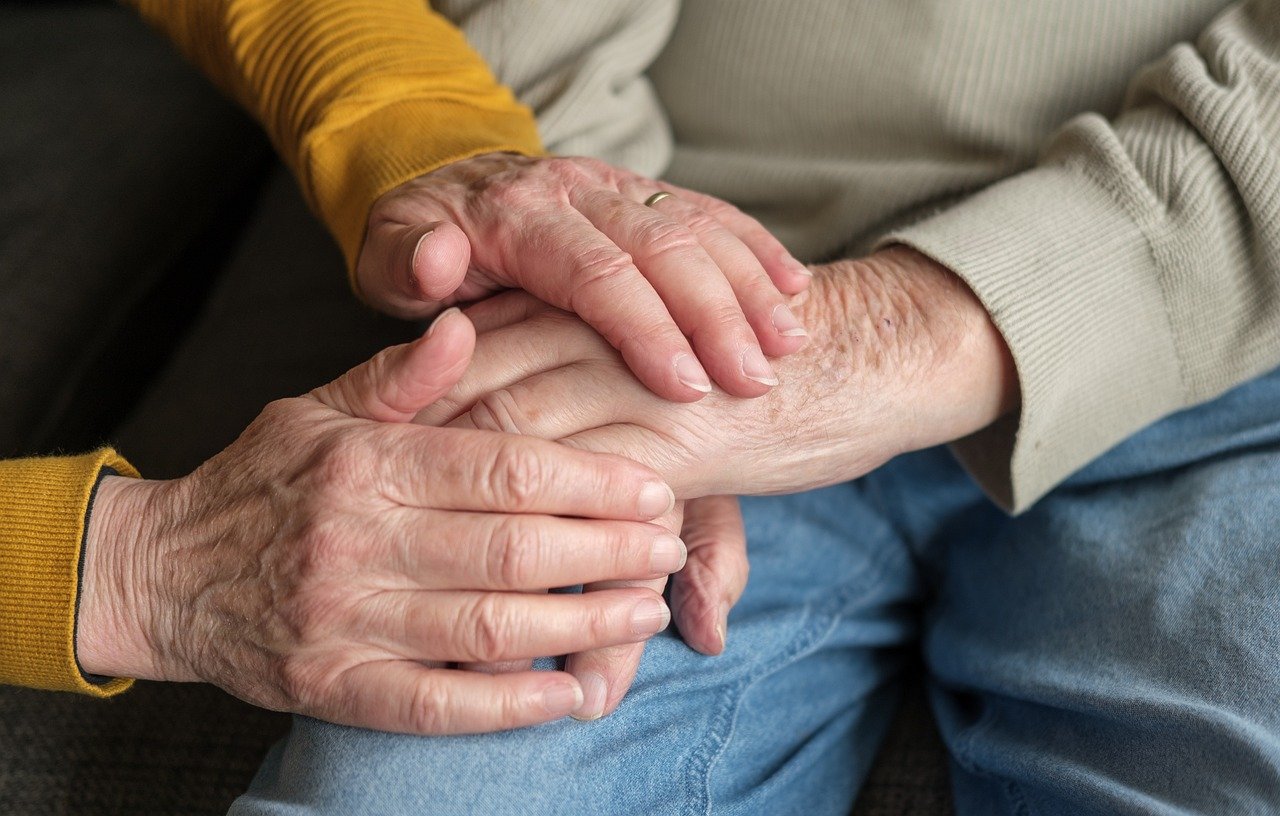
Cracks and Settling
When you're walking through a second-hand home, it’s easy to get swept away by the charming features and cozy corners. But hold on a second! Before you fall in love with that vintage fireplace or the quaint garden, take a moment to look down—specifically, at the walls and floors. Cracks and signs of settling can tell you a lot about the health of a home. These indicators aren’t just cosmetic; they can point to underlying structural issues that could cost you a fortune down the line.
So, what should you be on the lookout for? First, check for any visible cracks in the walls, especially around door frames and windows. If you see cracks that are wider than a quarter of an inch, that’s a red flag. Horizontal cracks can indicate serious foundation problems, while vertical cracks might just be a sign of normal settling. However, if you notice cracks that seem to be expanding or new ones appearing, it’s time to get a professional opinion.
Settling is a natural process that occurs over time, but excessive settling can lead to significant problems. Imagine your home as a cake; if the base isn’t firm and stable, the layers above might start to slide off. Similarly, if the foundation of your home is compromised, it can lead to uneven floors, doors that don’t close properly, and even more severe structural issues.
To help you assess the situation, here’s a quick checklist of things to inspect:
- Look for cracks in walls, floors, and ceilings.
- Check the alignment of doors and windows—do they stick or not close properly?
- Examine the exterior of the home for cracks in the brick or siding.
- Observe the basement or crawl space for any signs of moisture or water damage.
If you do find cracks, don’t panic just yet! Many homes show signs of settling, and not all of them are cause for concern. However, it’s essential to document your findings and consult with a qualified home inspector or structural engineer to get a clear understanding of what you’re dealing with. They can provide a detailed analysis and recommend whether repairs are necessary and how urgent they are.
In conclusion, while cracks and settling may seem like minor details, they can be the tip of the iceberg when it comes to a home’s structural integrity. By keeping a keen eye on these signs, you can protect your investment and ensure that your dream home doesn’t turn into a nightmare. Remember, it’s always better to be safe than sorry when it comes to one of the biggest purchases of your life!
- What should I do if I find cracks in the walls? It's best to consult a home inspector or structural engineer to assess the severity of the cracks.
- Are all cracks signs of serious problems? Not necessarily. Some cracks are normal and can occur due to settling, but it's important to evaluate them.
- How can I prevent settling issues in the future? Regular maintenance, proper drainage, and addressing any water issues promptly can help mitigate settling problems.

Water Damage
Water damage is one of the most insidious threats to a home, especially in older properties. It can silently wreak havoc, leading to structural issues and even health hazards like mold growth. As a potential buyer, it's crucial to be vigilant and know what to look for when assessing a second-hand home. One of the first things to check is the presence of any visible stains on the walls or ceilings. These stains can indicate past leaks or ongoing water intrusion, which could compromise the integrity of the structure.
Additionally, don't forget to inspect the basement or crawl space. These areas are often the first to show signs of water issues due to their proximity to the ground. Look for dampness, puddles, or even a musty smell, which can be telltale signs of water damage. If you notice any of these indicators, it’s wise to dig deeper. Ask the seller about the history of water damage and any repairs that have been made. Remember, transparency is key in real estate transactions, and a seller should be forthcoming about any issues.
Another critical factor to consider is the condition of the gutters and downspouts. Proper drainage is essential for preventing water from pooling around the foundation of the home. If gutters are clogged or downspouts are directing water towards the house, it can lead to significant water damage over time. Regular maintenance of these systems is not just a good idea; it's a necessity for the longevity of the home.
Here’s a quick checklist of signs to watch out for:
- Visible stains on ceilings or walls
- Damp or musty odors in basements or crawl spaces
- Cracked or peeling paint
- Rusty or corroded plumbing fixtures
- Water pooling around the foundation
Moreover, if you suspect water damage, consider hiring a professional inspector who specializes in moisture issues. They can use advanced tools such as moisture meters and thermal imaging cameras to detect hidden water damage that might not be visible to the naked eye. Investing in a thorough inspection can save you from future headaches and costly repairs. Remember, identifying water damage early can make a significant difference in your home-buying journey.
Q: How can I tell if there is water damage in a home?
A: Look for visible stains, musty odors, and damp areas, especially in basements or near plumbing fixtures. It's also wise to have a professional inspection.
Q: What are the long-term effects of water damage?
A: Long-term effects can include structural damage, mold growth, and decreased property value. It can also pose health risks due to mold exposure.
Q: Should I buy a house with a history of water damage?
A: It depends on the extent of the damage and the repairs made. Always conduct a thorough inspection and consult with professionals before making a decision.
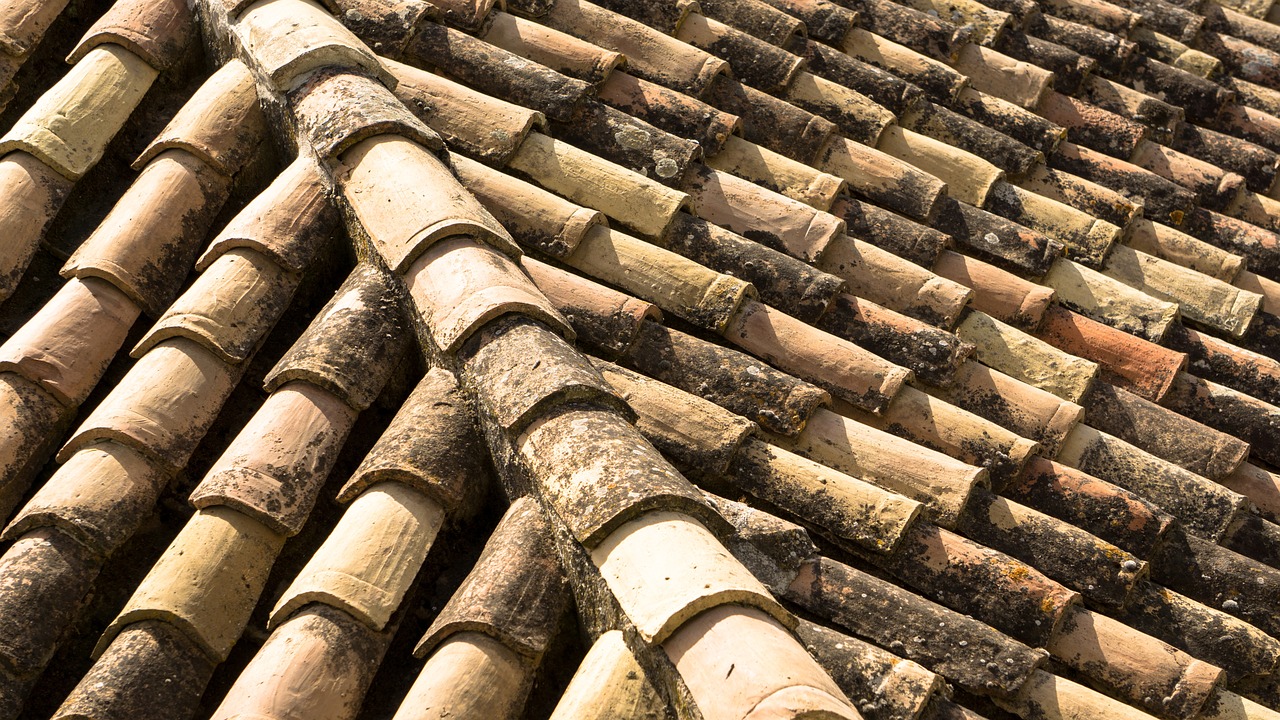
Roof Condition
When it comes to buying a second-hand home, the condition of the roof is often an overlooked aspect that can lead to significant issues down the line. Think of the roof as the umbrella of your home; it protects everything beneath it from the elements. A well-maintained roof can add years to your home’s life, while a neglected one can lead to a cascade of problems, including leaks, mold, and structural damage. Therefore, it’s crucial to assess the roof thoroughly before making a purchase.
Start by looking for visible signs of wear and tear. Age is one of the most critical factors in evaluating a roof's condition. Most roofs last between 20 to 30 years, depending on the materials used. If the roof is nearing the end of its lifespan, you might want to consider the cost of replacement in your budget. Common roofing materials include asphalt shingles, metal, tile, and slate, each with its own lifespan and maintenance needs. For instance, asphalt shingles typically last about 20 years, while metal roofs can last up to 50 years or more.
Next, examine the roof for any obvious signs of damage:
- Missing or Damaged Shingles: Look for shingles that are cracked, curled, or completely missing. This could indicate that the roof is not performing as it should.
- Granule Loss: If you notice a significant amount of granules in the gutters, it could be a sign that the shingles are deteriorating.
- Ponding Water: Check for areas where water tends to collect, as this can lead to leaks and further damage.
Additionally, don’t forget to inspect the flashing, which is the material used to direct water away from critical areas of the roof, such as chimneys and vents. Damaged or improperly installed flashing can lead to leaks, so it’s essential to ensure it’s in good condition. If you’re not comfortable climbing onto the roof, consider hiring a professional inspector who can provide a detailed assessment.
Another critical aspect to consider is the roof’s ventilation system. Proper ventilation helps to regulate temperature and moisture levels, preventing damage from heat and humidity. Inadequate ventilation can lead to a host of problems, including mold growth and reduced roof lifespan. Look for soffit vents, ridge vents, and gable vents to ensure that air can circulate freely.
Lastly, it’s wise to ask the seller for any maintenance records they may have. Knowing how often the roof has been inspected or repaired can give you a clearer picture of its condition. If the roof has been well-maintained, you may feel more confident in your purchase. On the other hand, if there are no records or if repairs have been made frequently, it might be a red flag.
In summary, evaluating the roof condition is an essential safety check when buying a second-hand home. By paying attention to age, visible damage, flashing, ventilation, and maintenance records, you can avoid potential pitfalls and ensure that your new home remains a safe haven for years to come.
1. How can I tell if my roof needs replacing?
If you notice multiple signs of damage, such as missing shingles, significant granule loss, or leaks, it may be time to consider replacing your roof. Additionally, if the roof is approaching its lifespan limit, it's worth assessing its condition closely.
2. What should I look for when inspecting a roof?
Look for missing or damaged shingles, signs of granule loss, areas of ponding water, and the condition of the flashing and ventilation systems. These factors can significantly impact the roof's performance and longevity.
3. Is it necessary to hire a professional for a roof inspection?
While you can perform a basic inspection yourself, hiring a professional can provide a more thorough evaluation and identify issues that may not be visible to an untrained eye.
4. How often should a roof be inspected?
It's generally recommended to have your roof inspected at least once a year, especially after severe weather conditions. Regular inspections can help catch potential issues early before they escalate into costly repairs.

Electrical System Safety
When it comes to buying a second-hand home, one of the most critical yet often overlooked aspects is the electrical system. An outdated or faulty electrical system can pose serious risks, including fire hazards and electrocution. So, how do you ensure that the electrical setup in your potential new home is safe? First and foremost, it's essential to know what to look for during your inspection. Think of the electrical system as the nervous system of the house; it needs to be in good working order to ensure everything else functions smoothly.
Start by examining the wiring and outlets. Are they up to code? Older homes may have wiring that doesn't meet current safety standards, which can lead to dangerous situations. For instance, if you see cloth wiring, it's a red flag. This type of wiring is outdated and can easily become a fire hazard. Additionally, check for the number of outlets in each room. A home with insufficient outlets can lead to overloading, which is another safety concern. If you find yourself using multiple extension cords, it's time to reconsider.
Next, turn your attention to the breaker box, often referred to as the heart of the electrical system. This is where the magic happens—it's responsible for distributing electricity throughout the home. Look for signs of wear and tear, such as rust or scorch marks. A breaker box that is too small for the home's electrical demands can also be problematic. For example, if the home has been renovated or has many modern appliances, the original breaker box may not be sufficient. You might want to consider upgrading to a more robust system to handle today's electrical load.
In addition to these checks, it’s wise to hire a licensed electrician for a professional assessment. They can uncover issues that may not be immediately visible to the untrained eye. A thorough inspection can save you from future headaches and costly repairs. Remember, investing a little now in electrical safety can prevent significant expenses down the road.
Here’s a quick table summarizing the key aspects to look for:
| Aspect | What to Look For |
|---|---|
| Wiring Type | Look for modern wiring; avoid cloth or aluminum wiring. |
| Outlets | Ensure there are enough outlets; check for overload signs. |
| Breaker Box | Check for rust, scorch marks, and adequate capacity. |
| Professional Inspection | Consider hiring a licensed electrician for a detailed assessment. |
Keeping these points in mind will help you navigate the often murky waters of electrical system safety in second-hand homes. Remember, it’s not just about aesthetics; it’s about ensuring a safe environment for you and your family. After all, your home should be a sanctuary, not a source of stress!
- What should I do if I find outdated wiring? - It’s best to consult a licensed electrician for an upgrade to meet modern safety standards.
- How can I tell if my breaker box is adequate? - A qualified electrician can assess your breaker box and determine if it meets your home’s electrical needs.
- Are there signs of electrical hazards I can spot myself? - Yes, look for flickering lights, burnt outlets, or tripped breakers as potential warning signs.

Wiring and Outlets
When it comes to buying a second-hand home, one of the most critical areas to inspect is the . An outdated or faulty electrical system can lead to serious hazards, including fires and electrocution. So, how can you ensure that the electrical setup in your potential new home is safe? First off, it's essential to look for visible signs of wear and tear around outlets and switches. Are there scorch marks or discoloration? These can be red flags indicating overloaded circuits or faulty wiring.
Next, check the number of outlets in each room. Older homes often have fewer outlets than modern standards require, which can lead to overloading. If you find yourself using multiple extension cords just to plug in your devices, that’s a clear sign you might need to upgrade the electrical system. In fact, it's a good idea to have a licensed electrician evaluate the home’s wiring if you notice any issues. They can provide a thorough inspection and recommend necessary upgrades.
Additionally, pay special attention to the type of wiring used in the home. Many older homes may still have knob-and-tube wiring or aluminum wiring, both of which can pose safety risks. Knob-and-tube wiring, for instance, lacks a ground wire, which is essential for modern electrical safety. Here’s a quick comparison of common wiring types:
| Wiring Type | Safety Rating | Notes |
|---|---|---|
| Knob-and-Tube | Low | Outdated, lacks grounding |
| Aluminum | Moderate | Can overheat, requires careful connections |
| Copper | High | Best choice for safety and longevity |
Another important aspect to consider is the placement of outlets. Are they conveniently located? In older homes, you might find outlets placed in awkward spots, making it challenging to use modern appliances. You may even want to consider adding more outlets to avoid the hassle of running extension cords throughout your living space.
Lastly, don't forget to check the breaker box. This is where the electrical system distributes power throughout your home. A well-maintained breaker box will have clearly labeled circuits, and the breakers themselves should not show signs of rust or damage. If the breaker box is outdated, it might not be able to handle the electrical demands of modern living, leading to frequent tripping and potential safety hazards.
In summary, ensuring that the wiring and outlets in a second-hand home are up to code and in good condition is crucial for your safety and comfort. If you’re unsure about what you’re looking at, consider hiring a professional to conduct a thorough inspection. It’s better to be safe than sorry!
- What should I do if I find faulty wiring? It's best to consult with a licensed electrician who can assess the situation and recommend repairs or upgrades.
- How can I tell if the outlets are safe? Look for any signs of damage, such as burn marks, and ensure that they are properly grounded.
- Is knob-and-tube wiring dangerous? Yes, it is considered outdated and can pose safety risks, so it’s advisable to replace it.
- How often should I have my electrical system inspected? It's recommended to have a professional inspection every 5-10 years, or if you notice any issues.

Breaker Box Assessment
The breaker box, often referred to as the electrical panel, is the heart of a home's electrical system. It distributes electricity throughout the house and protects your home from electrical overloads and potential fires. When purchasing a second-hand home, it's crucial to conduct a thorough assessment of this component to ensure it meets modern safety standards and can handle your electrical needs. You wouldn't drive a car without checking the engine, right? Similarly, you shouldn't overlook the breaker box when evaluating a property.
Start by examining the age of the breaker box. If it’s more than 20 years old, it might not be equipped to handle the demands of today's technology. Many older homes were built with systems that can’t support the plethora of devices we use today, from computers to smart home systems. If you find that the breaker box is outdated, consider the potential costs of upgrading it. A new breaker box can range from a few hundred to several thousand dollars, depending on the complexity of the installation.
Next, take a close look at the wiring inside the breaker box. Are the wires frayed or discolored? This could indicate overheating, which is a serious fire hazard. Additionally, check for any signs of rust or corrosion. These can compromise the integrity of the electrical system and may require immediate attention. If you’re unsure about what to look for, don't hesitate to bring in a qualified electrician. They can provide expert insights and help identify any potential issues that may not be immediately visible.
Another critical aspect to assess is the capacity of the breaker box. Most modern homes require a minimum of 200 amps to support various appliances and devices safely. If the box is rated for less than this, you might face issues with tripping breakers or, worse, electrical fires. To determine the capacity, look for a label on the inside of the panel door. If you see a rating lower than 200 amps, it could be a red flag.
Lastly, consider the layout of the breakers themselves. Are they organized and labeled clearly? A well-maintained breaker box will have each circuit labeled, making it easier to identify which breaker controls what area of the home. If the labels are missing or unclear, it might suggest a lack of maintenance or care in the home’s electrical system. This could lead to confusion and safety risks down the line.
In summary, assessing the breaker box is a crucial step in ensuring the safety and functionality of a second-hand home. By paying attention to the age, wiring condition, capacity, and organization of the breaker box, you can avoid potential hazards and costly repairs in the future. Remember, it's always better to be safe than sorry when it comes to electrical systems!
Q: What should I do if I find issues with the breaker box?
A: If you discover any issues, it's best to consult with a licensed electrician. They can provide a thorough inspection and recommend necessary repairs or upgrades.
Q: How often should I have my breaker box inspected?
A: It's advisable to have your breaker box inspected every few years, especially if you notice any signs of wear or unusual behavior, like tripping breakers.
Q: Can I replace a breaker box myself?
A: While some homeowners may attempt to replace a breaker box on their own, it's highly recommended to hire a professional electrician to ensure safety and compliance with local codes.

Plumbing and Water Quality
When it comes to buying a second-hand home, are often overlooked aspects that can have a significant impact on your health and safety. Imagine moving into your dream home only to discover that the plumbing is outdated or the water quality is poor—what a nightmare! To avoid such pitfalls, it’s crucial to conduct a thorough assessment of the plumbing system and ensure that the water you’ll be drinking and using is safe.
First off, let’s talk about common plumbing issues you might encounter. Older homes often come with a variety of plumbing problems, such as leaks, clogs, and corroded pipes. These issues can lead to water damage, mold growth, and even structural problems if not addressed promptly. So, what should you be looking for? Start by checking for any visible signs of leaks under sinks, around toilets, and in the basement. If you notice any damp spots or water stains, it’s a red flag that something might be amiss.
Another important factor to consider is the type of pipes used in the home. The material of the plumbing pipes can greatly affect the safety and longevity of the plumbing system. For example, homes built before the 1980s might have lead pipes, which pose serious health risks, especially if the water is consumed over time. Other materials, like polybutylene, can become brittle and prone to leaks. Here’s a quick rundown of common pipe materials and their associated risks:
| Pipe Material | Risks |
|---|---|
| Lead | Health risks, especially for children |
| Polybutylene | Brittleness and leaks |
| Galvanized Steel | Corrosion and rust |
| PVC | Generally safe but can degrade over time |
Now that we’ve covered the pipes, let’s move on to water quality. It’s essential to test the water in the home to ensure it’s safe for consumption. Contaminants like bacteria, lead, and other harmful substances can lurk in your water supply, especially in older homes with outdated plumbing. You can conduct a water quality test using a home testing kit, which is available at most hardware stores, or hire a professional service to do the testing for you.
When testing the water, pay attention to the following key indicators:
- pH Level: Should be between 6.5 and 8.5 for safe consumption.
- Lead Levels: Should be below 15 parts per billion (ppb).
- Bacteria: Presence of coliform bacteria indicates contamination.
In conclusion, ensuring safe plumbing and water quality is not just a matter of comfort; it’s a matter of health. Don’t let the excitement of buying a second-hand home cloud your judgment—take the time to investigate the plumbing system and test the water quality. After all, you want to make sure that your new abode is as safe and welcoming as it appears, avoiding any unpleasant surprises down the line.
Q: What are the signs of plumbing issues I should look for?
A: Look for damp spots, water stains, rust, and any unusual noises coming from the pipes. Also, check for low water pressure or slow drains.
Q: How can I test the water quality in a second-hand home?
A: You can use a home water testing kit or hire a professional service to conduct a comprehensive water quality test.
Q: What pipe materials should I avoid when buying a second-hand home?
A: Avoid homes with lead pipes, polybutylene pipes, and galvanized steel, as these can pose health risks and may require costly replacements.
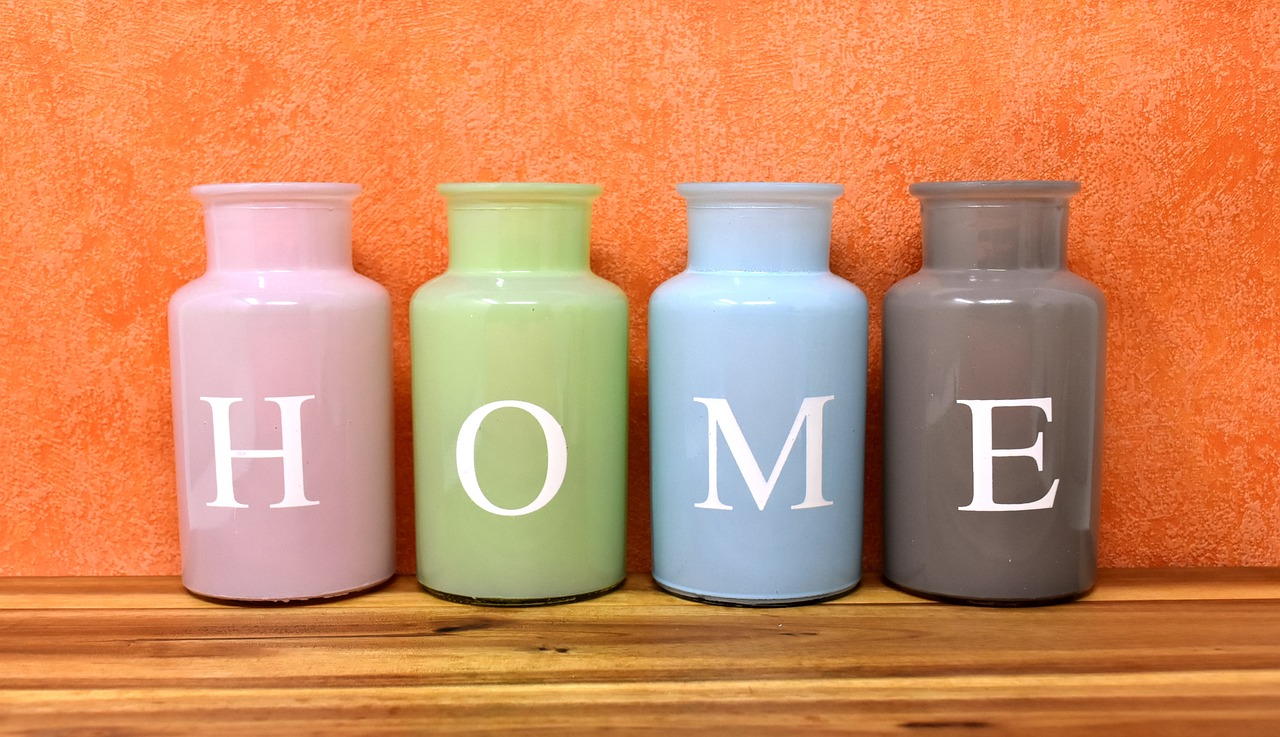
Pipe Material Concerns
When it comes to purchasing a second-hand home, one of the critical aspects that often gets overlooked is the type of plumbing pipes used throughout the property. The material of the pipes can significantly impact both the safety and longevity of your plumbing system. If you're not careful, you might find yourself dealing with costly repairs or health hazards due to outdated or unsafe pipe materials.
Let’s dive into some of the most common pipe materials you might encounter in older homes:
- Lead Pipes: These are a major red flag. Lead pipes can leach harmful contaminants into your drinking water, posing serious health risks, especially for children and pregnant women. If you discover lead pipes, it's crucial to replace them immediately.
- Galvanized Steel: While these pipes were once standard, they can corrode over time, leading to leaks and reduced water pressure. If you find galvanized steel pipes in a home, it may be worth negotiating for replacements.
- Polybutylene: Often used in homes built between the 1970s and 1990s, these flexible plastic pipes can degrade and crack, leading to leaks. If you see polybutylene pipes, be cautious—they're known for causing significant water damage.
- PVC and CPVC: Generally safe and durable, these plastic pipes are widely used in modern plumbing. However, make sure they are installed correctly and comply with local building codes.
Understanding the risks associated with these materials is essential. For example, lead pipes can cause serious health issues over time, while galvanized steel can lead to plumbing failures that disrupt your daily life. Therefore, during your home inspection, pay close attention to the type of pipes you encounter.
It's also wise to consider the age of the plumbing system as a whole. Even if the pipes appear to be in good condition, older systems may not meet current plumbing codes or handle the demands of modern appliances. If you're buying a home with an older plumbing system, you might want to budget for a complete overhaul.
To help you assess the plumbing situation better, here’s a quick comparison table of common pipe materials and their concerns:
| Pipe Material | Concerns | Recommendations |
|---|---|---|
| Lead | Health risks, contamination | Replace immediately |
| Galvanized Steel | Corrosion, leaks | Consider replacement |
| Polybutylene | Degradation, leaks | Replace with durable materials |
| PVC/CPVC | Installation issues | Ensure compliance with codes |
In summary, when evaluating a second-hand home, don’t just look at the aesthetics or the layout. Take the time to investigate the plumbing system and its materials. A little due diligence can save you from a world of headaches down the road.
Q: How can I tell if my pipes are lead?
A: You can check for lead pipes by looking for a dull gray color and a soft texture. If you scratch the surface with a key, it should reveal shiny metal underneath. If you suspect lead, consider hiring a professional to evaluate your plumbing.
Q: What should I do if I find polybutylene pipes?
A: If you discover polybutylene pipes in a home, it's advisable to consult a plumber about replacing them with more durable materials, as they are prone to leaks and failure.
Q: Are PVC pipes safe for drinking water?
A: Yes, PVC pipes are generally safe for drinking water, but ensure they are installed correctly and meet local building codes.

Water Testing
When it comes to buying a second-hand home, one of the most critical yet often overlooked aspects is the quality of the water supply. After all, water is essential for our daily lives, and ensuring its safety should be a top priority. is a vital step that can help you uncover potential contaminants lurking in the plumbing system, which could pose serious health risks to you and your family.
So, what exactly should you be looking for when it comes to water testing? First and foremost, it's essential to understand that water can be contaminated by a variety of sources. From lead pipes to agricultural runoff, the quality of your water can be compromised in numerous ways. To ensure you're making a safe choice, consider conducting a comprehensive water test that evaluates the presence of harmful substances such as:
- Lead: Particularly concerning in homes built before 1986, lead can leach into drinking water from old pipes.
- Nitrates: Commonly found in agricultural areas, high levels of nitrates can be harmful, especially to infants.
- Chlorine: While used to disinfect, excessive chlorine can lead to unpleasant tastes and odors.
- Bacteria: Pathogens like E. coli can indicate serious contamination issues.
To conduct a water test, you have a few options. You can purchase a home testing kit from a local hardware store, which typically includes test strips or vials to collect samples. Alternatively, you can hire a professional service that specializes in water quality testing. This option might be more thorough and reliable, as professionals have access to advanced testing equipment and can provide a detailed analysis of your water quality.
Once you've collected your water samples, it’s crucial to send them to a certified laboratory for analysis. The lab will test for a range of contaminants and provide you with a report detailing the results. This information is invaluable, as it can inform your decision about whether to proceed with the home purchase or negotiate repairs with the seller. Remember, the presence of contaminants can not only affect your health but may also impact the home's value and your overall living experience.
In conclusion, is a straightforward yet essential step in the home-buying process. By taking the time to evaluate the quality of the water in a second-hand home, you can protect yourself and your loved ones from potential health hazards. Don’t overlook this critical aspect; after all, a home is not just about bricks and mortar—it's about the safety and well-being of those who live within its walls.
Q1: How often should I test my water?
A1: It's recommended to test your water annually, especially if you notice any changes in taste, odor, or color.
Q2: What should I do if my water tests positive for contaminants?
A2: If contaminants are detected, consult with a water treatment professional to discuss filtration or purification options.
Q3: Are home water testing kits reliable?
A3: While home kits can provide a general idea of water quality, for accurate results, it's best to send samples to a certified laboratory.
Frequently Asked Questions
- What is a home inspection and why is it important?
A home inspection is a thorough examination of a property's condition conducted by a professional inspector. It's crucial because it helps identify potential issues before you finalize your purchase, potentially saving you from costly repairs and ensuring your investment is sound.
- How can I check the structural integrity of a second-hand home?
To check the structural integrity, look for visible signs of damage such as cracks in the foundation, walls, or ceilings. Also, assess the roof for any signs of wear and tear. Hiring a qualified inspector can provide a detailed assessment and peace of mind.
- What should I look for regarding the roof's condition?
When evaluating a roof, check its age, the materials used, and any visible signs of damage like missing shingles or leaks. A well-maintained roof is essential for protecting the entire home from the elements.
- How do I ensure the electrical system is safe?
Inspect the wiring and outlets for any signs of wear or outdated components. It's also important to evaluate the breaker box to ensure it can handle modern electrical demands. If you're unsure, consider hiring a licensed electrician for a thorough inspection.
- What plumbing issues should I be aware of?
Common plumbing issues include outdated pipes, leaks, and signs of water damage. Pay attention to the type of pipes used in the home, as some materials can pose health risks. A professional plumber can help identify potential problems.
- How can I test the water quality in a second-hand home?
You can test water quality by using home testing kits available at hardware stores or by hiring a professional service. These tests can identify contaminants and ensure the water is safe for consumption.





